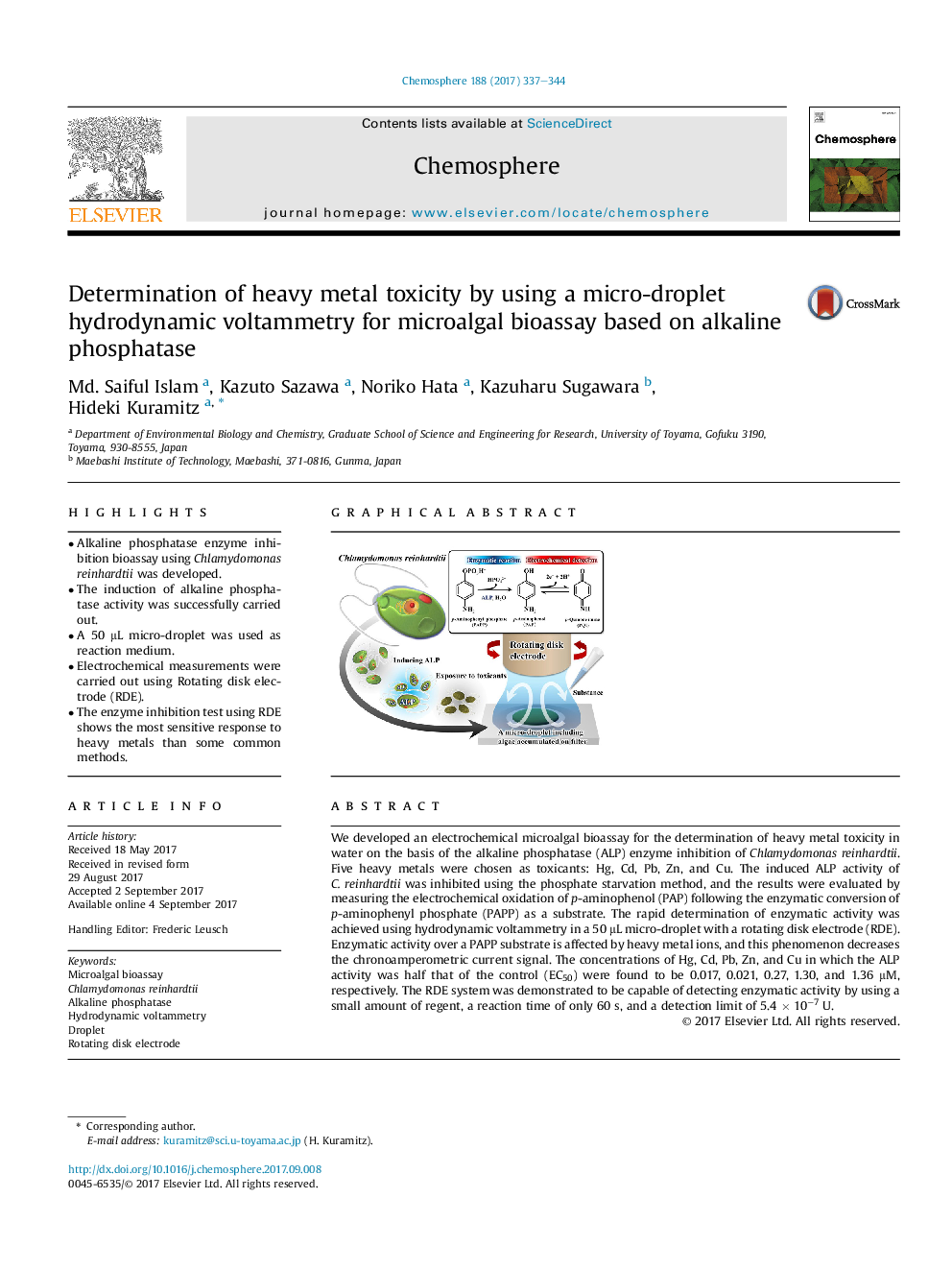| Article ID | Journal | Published Year | Pages | File Type |
|---|---|---|---|---|
| 5745834 | Chemosphere | 2017 | 8 Pages |
â¢Alkaline phosphatase enzyme inhibition bioassay using Chlamydomonas reinhardtii was developed.â¢The induction of alkaline phosphatase activity was successfully carried out.â¢A 50 μL micro-droplet was used as reaction medium.â¢Electrochemical measurements were carried out using Rotating disk electrode (RDE).â¢The enzyme inhibition test using RDE shows the most sensitive response to heavy metals than some common methods.
We developed an electrochemical microalgal bioassay for the determination of heavy metal toxicity in water on the basis of the alkaline phosphatase (ALP) enzyme inhibition of Chlamydomonas reinhardtii. Five heavy metals were chosen as toxicants: Hg, Cd, Pb, Zn, and Cu. The induced ALP activity of C. reinhardtii was inhibited using the phosphate starvation method, and the results were evaluated by measuring the electrochemical oxidation of p-aminophenol (PAP) following the enzymatic conversion of p-aminophenyl phosphate (PAPP) as a substrate. The rapid determination of enzymatic activity was achieved using hydrodynamic voltammetry in a 50 μL micro-droplet with a rotating disk electrode (RDE). Enzymatic activity over a PAPP substrate is affected by heavy metal ions, and this phenomenon decreases the chronoamperometric current signal. The concentrations of Hg, Cd, Pb, Zn, and Cu in which the ALP activity was half that of the control (EC50) were found to be 0.017, 0.021, 0.27, 1.30, and 1.36 μM, respectively. The RDE system was demonstrated to be capable of detecting enzymatic activity by using a small amount of regent, a reaction time of only 60 s, and a detection limit of 5.4 Ã 10â7 U.
Graphical abstractDownload high-res image (186KB)Download full-size image
